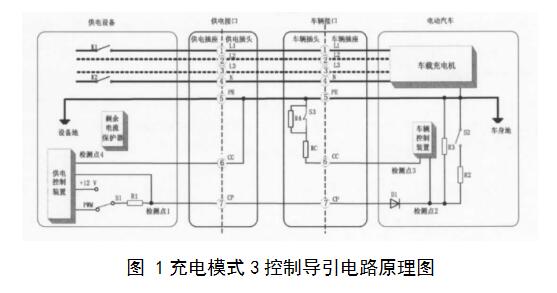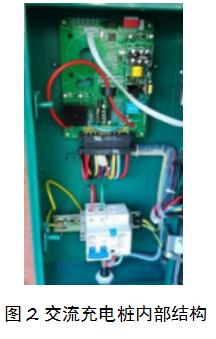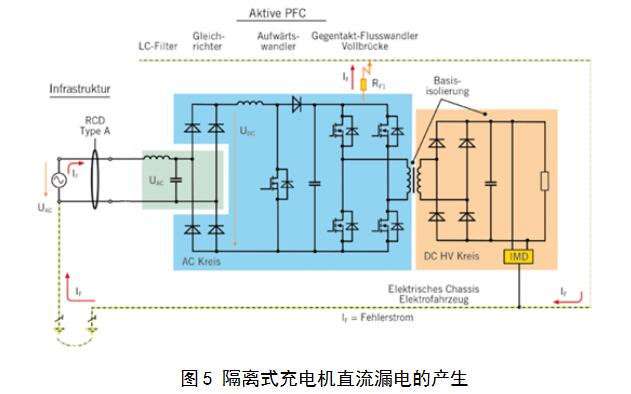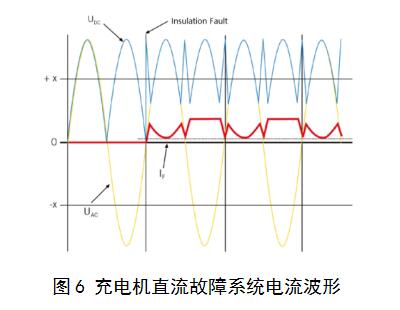From 2012 to 2016, global new energy passenger vehicles increased from 116,000 to 751,000 vehicles, maintaining an average annual growth rate of 75% in the past five years. China's new energy vehicle market has maintained rapid growth since 2014. From 2014 to 2015, the annual growth rate was over 200%. In 2016, despite the impact of fraud and policy, it still maintained a 63% growth. The growth of the new energy vehicle market is inseparable from the construction of the basic charging facilities. How to ensure the safety of electricity during the charging process, especially to prevent the leakage current from causing harm to life and property, is a problem worthy of attention.
Residual Current Operated Protective Devices (RCD), as a leakage protector, is widely used in low-voltage power distribution systems to prevent electric shock accidents, electrical equipment leakage damage and electrical fires. Also in the field of electric vehicle charging, RCD is widely used as a basic electrical protection device.
There are four modes of charging for electric vehicles, which are clearly stated in GB/T 18487.1-2015 "Electrical Vehicle Conductive Charging System Part 1: General Requirements". Mode 1 uses a charging connection cable to connect the electric vehicle to the AC grid. The residual current protection mainly depends on the residual current protection device (RCD) in the building distribution box. Since there is no guarantee that all existing building devices are equipped with RCD, this method Very dangerous, has been banned; Mode 2 installed cable control protection device (IC-CPD) on the charging connection cable, IC-CPD has residual current detection protection function; Mode 3 uses dedicated power supply equipment, the electric vehicle and The AC power grid is directly connected, and a control guiding device is installed on the dedicated power supply device, and the dedicated power supply device is an AC charging pile; in the fourth mode, when the electric vehicle is connected to the AC power grid or the DC power grid, the DC power supply device with the control guiding function is used. , that is, DC charging pile. Here, we mainly discuss the selection of the residual current protector in mode three, mode four charging pile.
In GB/T 18487.1-2015, the residual current protector of AC power supply equipment should adopt Type A or Type B, which meets the relevant requirements of GB 14084.2-2008, GB 16916.1-2014 and GB 22794-2008. As shown in Fig. 1, the schematic diagram of the charging mode 3 control guiding circuit is installed, and a residual current protector is installed inside the power supply device.

What is a Type A or Type B residual current protector? China's Residual Current Protection Device (RCD) Guiding Standard GB/Z 6829-2008 (IEC/TR 60755:2008, MOD) "General Requirements for Residual Current Action Protectors" from the basic structure of the product, residual current type, tripping The way of dividing the way. The RCD can be classified into AC type, A type, and B type according to the type of residual current. AC Residual Current Protector: A RCD that ensures tripping of a residual sinusoidal alternating current that is suddenly applied or slowly rising. Type A Residual Current Protector: Contains the characteristics of the AC type and superimposes the pulsating DC residual current and the pulsating DC residual current with a 6 mA smooth residual current to ensure the tripped RCD. Type B residual current protector: includes type A protection characteristics. In addition, sinusoidal AC residual current of 1000 Hz and below, AC residual current superimposed with smooth DC residual current, pulsating DC residual current superimposed smooth residual current, two or more The pulsating DC residual current generated by the phase rectification circuit and the smooth DC residual current ensure the tripped RCD.
At present, because the price of the B-type RCD is too expensive, most of the AC charging piles in the country are installed with type A residual current protectors. The figure below shows the internal structure of the AC charging pile, using the Type A residual current protection device.

Then, can the residual current protector of type A meet the leakage protection requirements of the charging pile? Let's analyze the type of residual current that can be generated during charging.

As shown in FIG. 3, in the charging process using the AC charging post, the AC charging post and the vehicle coupler are connected to the public power grid, and if the insulation is broken in the pile, a power frequency AC leakage current may be generated. In the electric vehicle part, the leakage current that may be generated mainly comes from the leakage of the vehicle charger. The general topology of the charger is mainly AC/DC and DC/DC. The main circuit diagram of a common car charger is shown in the figure below. 
The AC/DC part of the single-phase input AC is first EMI filtered, then the 85~265V AC is rectified into a stable output DC 400V under the Boost APFC circuit, and DC input is provided for the latter stage. The DC/DC section uses a phase-shifted full-bridge LLC main circuit to convert the DC voltage of 400V into an acceptable voltage for the battery. When the insulation between the circuit board and the device casing is damaged, a pulsating DC residual current may be generated in the rectifying portion, and a DC residual current having a small ripple coefficient may be generated in the Boost type APFC circuit. Here we borrow Bender's diagram to detail the generation and harm of DC residual current. 
It can be seen that DC leakage may occur in the DC/DC part of the push-pull full-bridge converter. China's low-voltage power distribution system is generally powered by TN. The metal casing of the equipment is connected to the working zero line. The DC leakage will pass through the body and the PE line. Feedback to the charging line affects the overall system current waveform. Through the simulation of the equivalent circuit, it is found that the current waveform of the whole system will change, as shown in the following figure.

It can be seen that after DC leakage occurs at the back end, it will also affect the pre-stage circuit. The pulsating DC waveform after rectification is distorted, causing spikes, causing interference to the back-end circuit step by step, affecting the charging effect and even affecting the battery life. . On the other hand, due to the existence of the TN system, this kind of fault will not form a large voltage in the body, which is less harmful to the human body. However, if the grounding of the connecting system is missing or the PE wire is disconnected, this part of the voltage will damage the human body. . In fact, there are problems in the connection of PE lines and ground lines in many places in China, especially in rural areas. The existing A-type RCD can only be interfered with DC 6mA current when detecting pulsating DC leakage, and can not detect DC leakage and disconnect protection. When the DC leakage is greater than 6mA, the residual current of the DC will cause the magnetic core to be pre-magnetized. In order to increase the trip value, the type A RCD cannot operate normally, so it must be protected with a B type RCD!
Similarly, inside the DC charging pile, the commercial power is converted into high-precision DC power by the off-board charger to charge the battery. The DC charging pile leakage protection is divided into AC side and DC side. In theory, the AC side needs to increase the B type RCD for protection. The DC side needs to be equipped with a DC grounding insulation monitoring device to detect the DC positive and negative ground insulation detection.
In the foreseeable future, as new energy vehicles enter thousands of households, charging piles will become an indispensable part of the lives of ordinary people. Therefore, the replacement of residual current protectors in charging piles is necessary, only for safe use. The electrical environment allows everyone to enjoy the convenience of new energy vehicles with confidence.
Magtron's overall SoC chip solution based on iFluxgate technology digitally integrates B-type leakage protection, providing a cost-effective B-type leakage solution for RCCB's upgrade from traditional AC/A to B-type technology. It provides better protection for the safety of the charging equipment.
ã€references】
[1] Liu Hongli, Ma Zhenglai, Nie Peng. Research and implementation of 4KW electric vehicle on-board charger. Wuhan University of Technology, Automation College.
[2] GB/T 18487.1-2015 electric vehicle conduction charging system Part 1: General requirements.
[3] General requirements for GB/Z 6829-2008 residual current operated protectors.
[4] GB 22794-2008 Type B residual current operated circuit breakers (type B RCCB and type B RCBO) without and with overcurrent protection for household and similar purposes.
[5] Cai Congchao, Wan Yingfei, Liu Yong, Yan Shaoqing. Analysis and design of potential electric shock risk of DC charging pile. TBEA Xinjiang New Energy Co., Ltd., TBEA Xi'an Electric Technology Co., Ltd.
[6] Liu Jinwei, Zou Jianhua, Hu Hongyu. Application of Residual Current Action Protector in Electric Vehicle Charging System. Electrical Appliances and Energy Efficiency Management Technology.
[7]WOLFGANG HOFHEINZ, HARALD SELLNER, WINFRIED M?LL. LANDEN VON ELEKTROFAHRZEUGEN SCHUTZ GEGEN ELEKTRISCHEN SCHLAG DURCH DC-FEHLERSTROMSENSORIK. der Bender GmbH&Co.KG in Grünberg
Others Washing Machine Motor,Drain Motor Washing Machine,Washing Machine Dryer Motor,Inverter Motor Washing Machine
WUJIANG JINLONG ELECTRIC APPLIANCE CO., LTD , https://www.jinlongmotor.com
